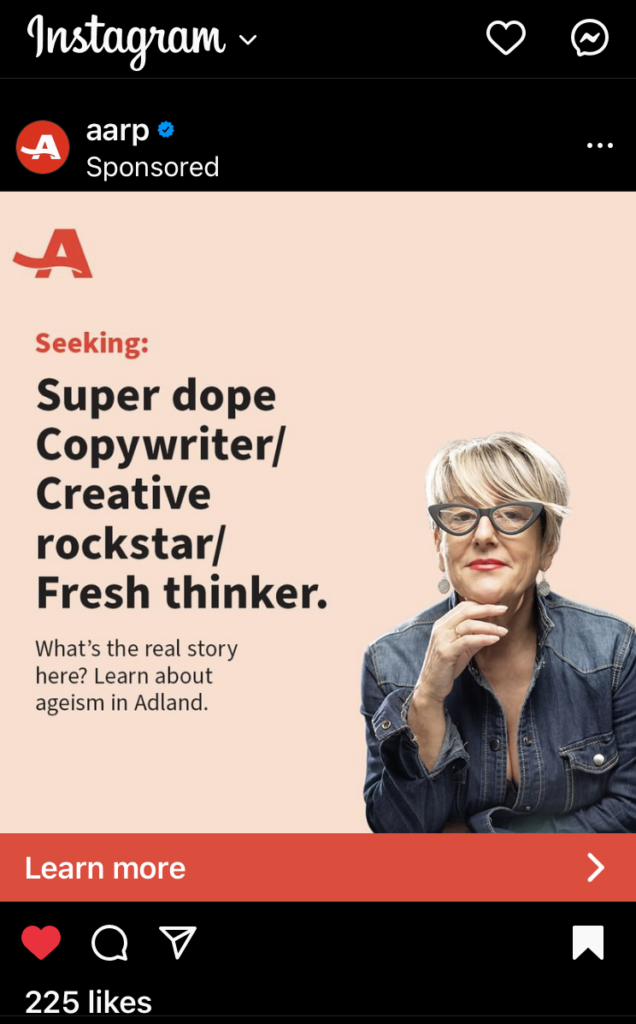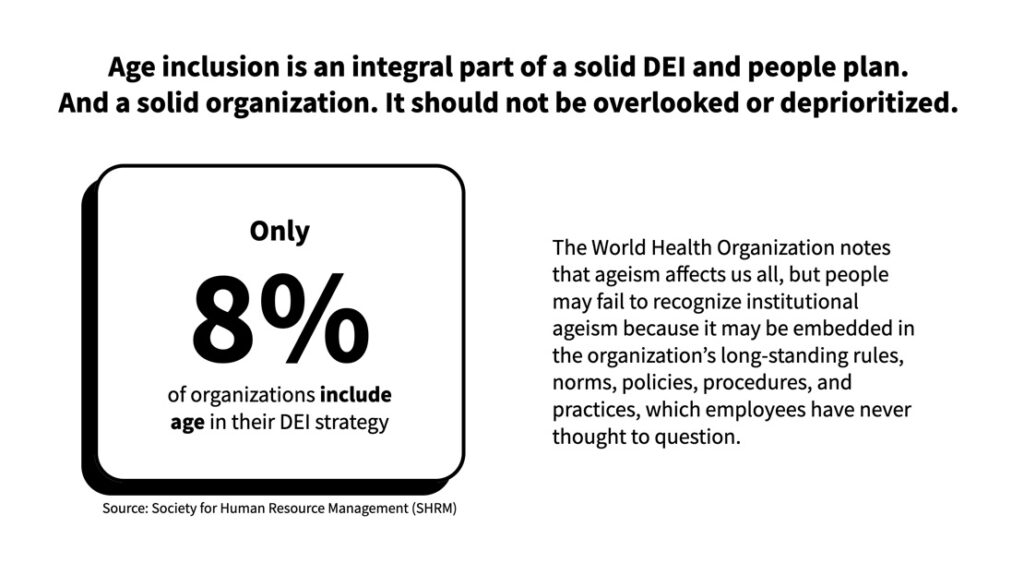Are you an advertising professional in your late 30s? Great. You have about five years, give or take, to make all the money you can and reach the highest position you can. Don’t let the opportunity pass you by, because soon you’ll be too old to achieve at the highest level. You’ll also be too old to get a new job or keep the one you have. Forget that you’re still young enough to reproduce or fight in a war, this is the ad biz and we all know that the ad business runs on the exalted enthusiasm of youth.
The data points on this topic are abundant, and LinkedIn is chock full of anecdotal reports that confirm the harsh realities of ageism in advertising. Nina McCollum, a copywriter, recently confessed:
I know now at 54 what I didn’t know at 48, which is that the likelihood that I will find a great fit for FT work with my years of experience is pretty slim. Corporate America sees me as an expensive out of touch dinosaur even though my freelance clients see what I bring, value it, and continue to give me work since I give them amazing results.
Her post has more than one hundred comments. Looks like it struck a nerve with others perceived to be “expensive out-of-touch dinosaurs.”
What’s AARP Got To Do With It?
AARP is pointing to this industry-wide discrimination and working to fix it. Note, how it’s not one of the industry trade groups taking this action. It’s a truly powerful advocacy group with 37M members.

In a special section of their website dedicated to this issue, AARP asks: “Ageism is Adland’s oldest open secret. We all know it. And we all experience it. So why is this important dimension of diversity often overlooked or left out of DEI initiatives, strategies, and conversations?”

The simplest answer is the people who establish and abide by these illegal hiring practices think that they’re somehow outside the problem and that ageism won’t come for them. It’s a little lie that people tell themselves. One that goes with the lies that older workers are out-of-touch and expensive. Waste and inefficiency borne of inexperience are expensive.
Sometimes, You Have to Laugh
Grant Smith is another person on LinkedIn writing about The Olds. Mr. Smith is funny. Funny is good.
As a not-old person, you will naturally want to keep older people well away from you, mostly so that no one will mistake you for being not young. Which would be deeply humiliating and profoundly preposterous.
Being around older people also carries the serious risk that you might unintentionally ‘catch old.’ It’s a proven fact that if you work with someone who has thinning hair for a very long time, you too may experience the horrible ignominy of less hair. And if someone you work with has a bit of sag in the jowls, eventually your own droopy face bits will accelerate their embrace of gravity’s inevitable floppy dangle.
While discrimination of any sort is brutal and wrong, I like that talented communicators are playing tug with this odious topic.
There are myriad reasons to invest in diversity and inclusion, including this one—there is no monolithic group of consumers. People are people and people contain unique perspectives, histories, and tastes. It’s an advertising pro’s job to be curious and open, to seek to understand and empathize with all sorts of people (to better connect with them and more effectively put various brand-sponsored offers in front of them). If an industry is invested in one sort of worker over another or just one set of predetermined answers to client problems, it’s needlessly limiting.
Ad people are hired dreamers, but even dreamers can find themselves in a rut, and when they do it’s time for new, more expansive dreams that reflect a more inclusive daytime reality. Ageism is more than a bad habit, in business, it comes with a high cost (from legal judgments to operational inefficiencies). Thankfully, bad habits can be changed, although it’s never easy to change behavior.
Discover more from Adpulp
Subscribe to get the latest posts sent to your email.



